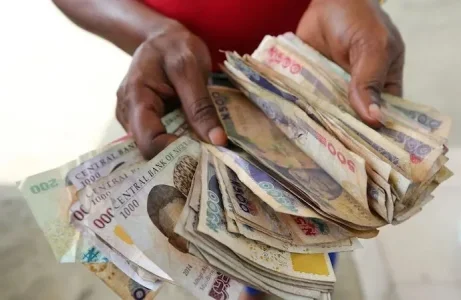
Discover the weakest currencies in Africa for 2024, including Sierra Leone's Leone, Sao Tome's Dobra, and Nigeria's Naira. Explore how high inflation and economic instability affect these currencies, impacting investment and global market competition.
A weak currency can significantly hinder a country's economic stability and growth, posing challenges to both investors and citizens. High inflation and currency instability deter investors and make global market competition difficult. Here, we explore some of the least-performing currencies in Africa.
- Leone [SSD] - Sierra Leone: The Leone, introduced in 1964 to replace the British West African pound, is managed by the Central Bank of Sierra Leone. Despite adopting a floating exchange rate to combat overvaluation, Leone suffers from persistently high inflation. Currently, 1 US dollar equals 22,509 SLL.
- Dobra[STD] - Sao Tome and Principe: The Dobra became the official currency of Sao Tome and Principe in 1977, replacing the escudo. Pegged to the Euro in 2010, the Dobra remains unreliable due to inflation, with 1 US dollar equivalent to 22,281 STD.
- Guinean Franc [GNF] - Guinea: The Guinean Franc, first introduced in 1959, has undergone several changes, including a brief period as the Guinean Syli. Since 1985, the Guinean Franc has been the official currency, now exchanging at 8,615 GNF per US dollar.
- Malagasy Ariary [MGA] - Madagascar: The Ariary, introduced in 1961 and made the official currency in 2005, replaced the Malagasy franc. Despite its long history, the Ariary remains weak, with 1 US dollar worth 4,555 MGA.
- Ugandan Shilling [UGX] - Uganda: Introduced in 1966 to replace the East African shilling, the Ugandan Shilling is managed by the Bank of Uganda. Not pegged to any other currency, 1 US dollar is equivalent to 3,712 UGX.
- Burundian Franc [ BIF] - Burundi: The Burundian Franc, issued in 1964, replaced the German East African Rupie and the Belgian Congo currency. Its value is influenced by market dynamics, with 1 US dollar currently worth 2,877 BIF.
- Congolese Franc [CDF] - Democratic Republic of Congo: The Congolese Franc, alongside the US dollar, is used for most transactions in the DRC. Despite its usage, the CDF remains weak, with 1 US dollar equating to 2,865 CDF.
- Tanzanian Shilling [TSZ] - Tanzania: Since its introduction in 1966, the Tanzanian Shilling has not been pegged to any currency. Issued by the Central Bank of Tanzania, 1 US dollar currently equals 2,700 TSZ.
- Malawian Kwacha [MWK] - Malawi: The Kwacha, introduced in 1977, replaced the Malawian pound. It is managed by the Reserve Bank of Malawi, with 1 US dollar now worth 1,735 MWK.
- Naira [NGN] - Nigeria: The Naira replaced the British pound in 1973 and is managed by the Central Bank of Nigeria. Despite floating at the Forex market, 1 US dollar currently equals approximately 1,661 NGN.




